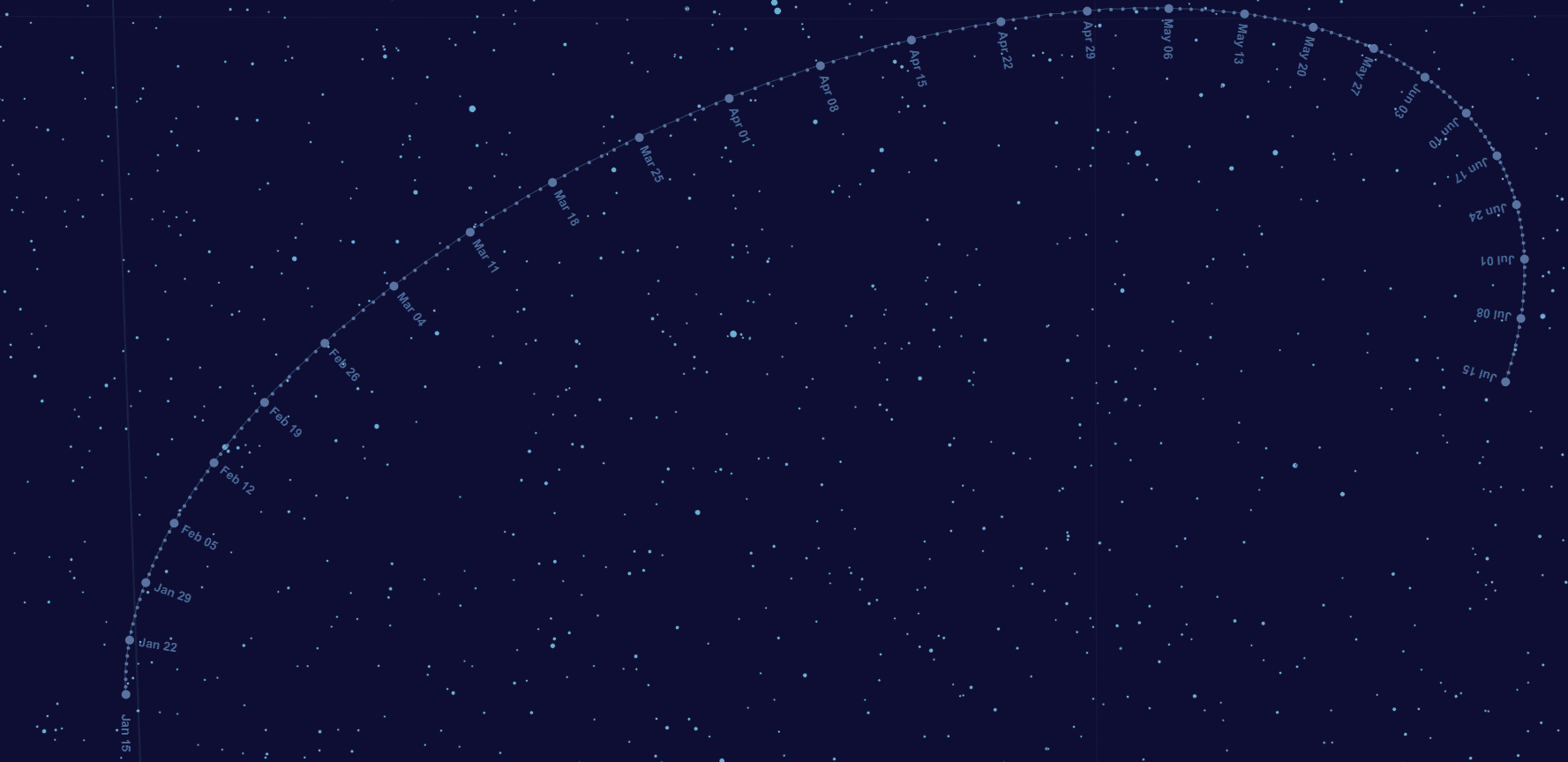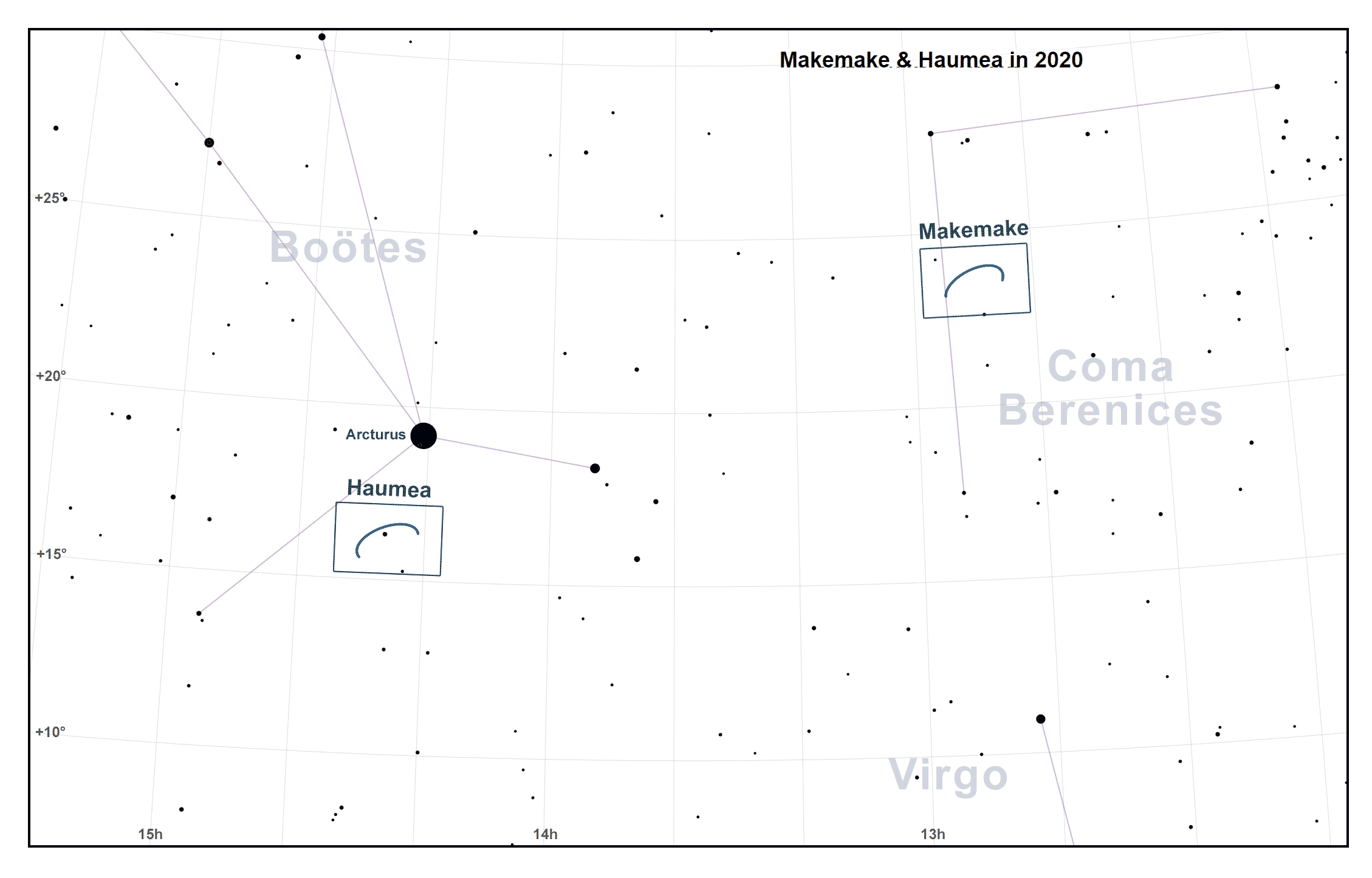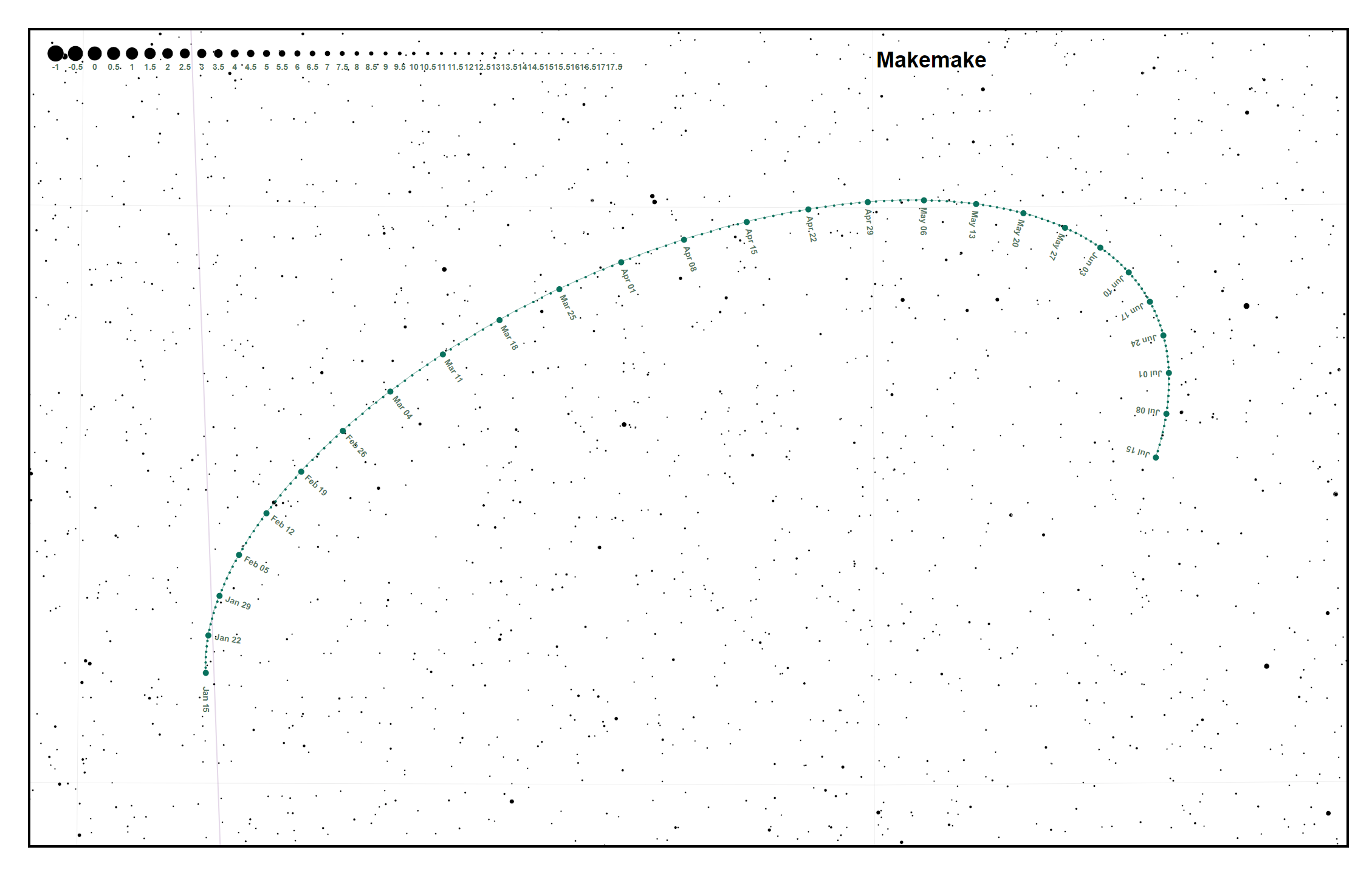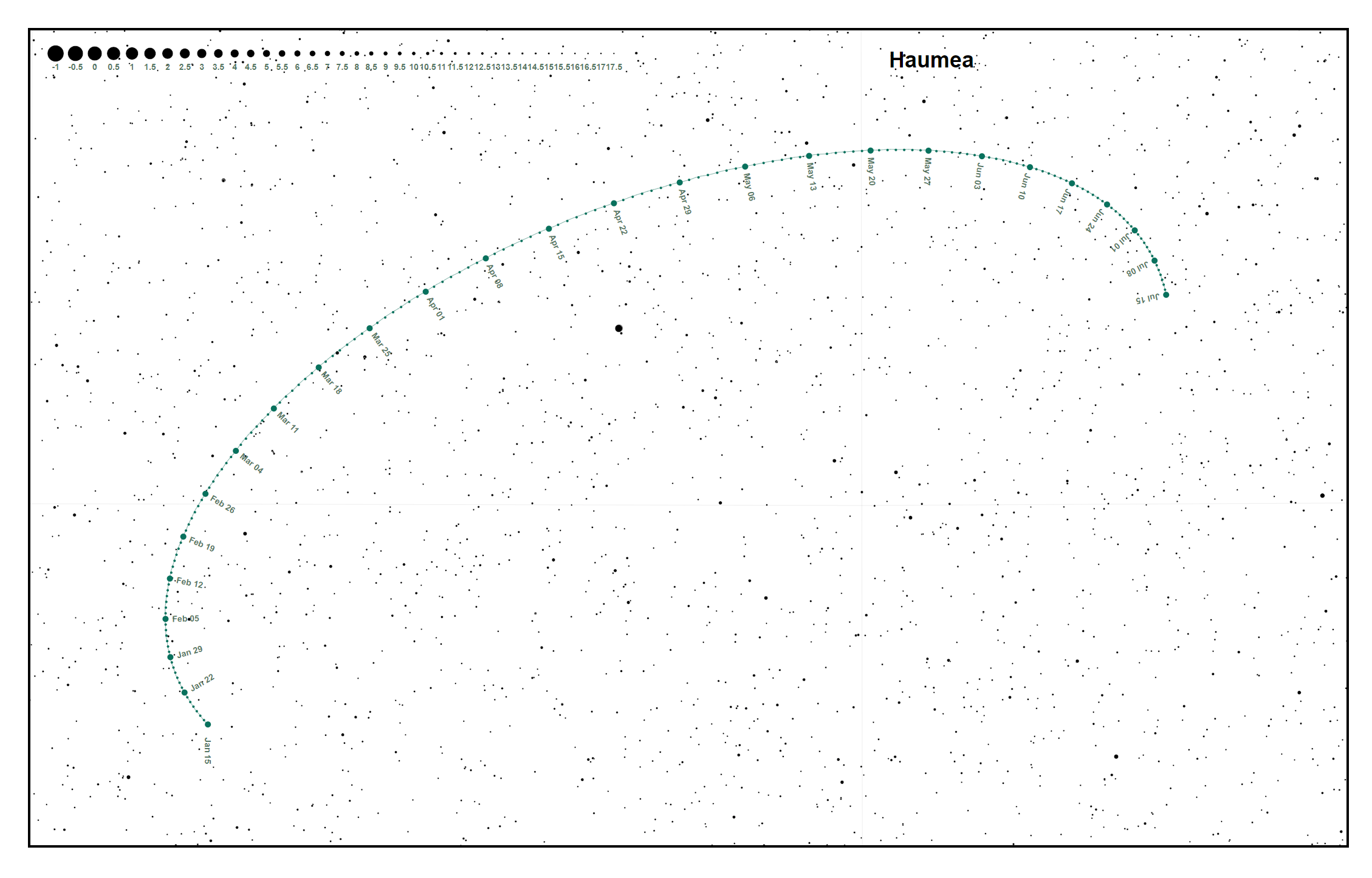
Outer Worlds: Take a Journey to Two Dwarf Planets
March 2020 :
When we think about dwarf planets, we often first think of Pluto, the one we had for decades known as our solar system’s ninth planet, and the one we became very familiar with when New Horizons gave us our first close-up views of in July 2015. But did you know that our solar system has four other dwarf planets (and possibly more)?
You may have heard of Ceres, the largest object in the main asteroid belt, and the first asteroid to be discovered, in 1801. Ceres is the most easily observed of all the dwarf planets, remaining bright enough to be seen with binoculars most of the time. It is also the only other dwarf planet besides Pluto that we have had a good view of, courtesy of the Dawn spacecraft.
That leaves three other worlds that we call dwarf planets, and they’re all trans-Neptunian objects (TNOs) which lie beyond the orbit of Pluto. They are Haumea, Makemake and Eris.
On this 90th anniversary of Pluto’s discovery, let’s take a journey to two of these fascinating outer worlds.

Our first destination is Makemake, a world about ⅔ the diameter of Pluto, and known to have its own moon. Makemake was discovered by a team of astronomers led by Mike Brown at Palomar Observatory in 2005, and is named for the creator and fertility god of the Rapa Nui people of Easter Island.
Makemake orbits the Sun at an average distance of 45 AU, but because it is close to aphelion (2034) in its highly elliptical orbit it will be nearly 52 AU away from Earth during the next several oppositions. Its orbit is also highly inclined at 29° to the ecliptic, and it is currently close to its northernmost position in that orbit, putting it in a very favorable position for northern hemisphere observation. Although Makemake is smaller than Pluto and significantly more distant, its somewhat higher albedo helps to keep it within range of amateur telescopes at 17th magnitude.
Makemake reaches opposition on March 26, and due to its northerly declination, is well placed for observation for several months. To locate Makemake, we turn our gaze towards Coma Berenices, just a few degrees from the north galactic pole. The chart shows the patch of sky between Diadem (alpha) and beta Comae Berenices with stars down to magnitude 17.5.
A keen-eyed observer using a 20-inch or larger telescope may be able to spot Makemake making its slow progression amongst the background stars. Up until a few years ago, only observers with access to such a large instrument could even attempt such a challenge. Nowadays, users of more modest equipment will have a much easier time exploring our solar system’s distant worlds. The digital imaging revolution, and more recently, the ubiquity of affordable CMOS cameras has made tracking down faint objects attainable to users of fairly small instruments. In fact, you probably do not need a telescope any larger than 100mm aperture. The most critical piece of equipment needed is a tracking equatorial mount with proper polar alignment.
If you do attempt to observe Makemake visually, a single observation won’t be enough to confirm a successful hunt. You’ll need to plan follow-up observations on successive nights. Keep in mind that at this great distance, Makemake moves eastward only about one arcminute per day near opposition, and its entire retrograde loop is just 1.8° (less than four Moon diameters) long. Match your field of view with the detail chart, and sketch the fainter objects you see. If you’re observing digitally, plate-solving software such as Astrometrica should be able to quickly identify Makemake from a single FITS frame.

Makemake has one known as yet unnamed moon, a very dark object estimated to be no more than 175 kilometers across and orbiting at a distance of about 21,000 kilometers, putting it at an angular separation of about ½ arcsecond from its parent body, too close to be resolved in amateur telescopes today.
The next stop in our journey is Haumea, named after the Hawaiian goddess of fertility. It was co-discovered at Sierra Nevada Observatory in Spain by astronomers led by José Luis Ortiz Moreno, using data from Mike Brown’s team at CalTech, and announced in 2005.
Haumea, like Makemake, is in a highly inclined elliptical orbit which presently places it just a few degrees south of Arcturus in Bootes. Although Haumea’s April 18 opposition is slightly closer than that of Makemake at 49.45 AU, its ellipsoidal shape makes it slightly dimmer at about magnitude 17.3. This should still be within reach of an instrument capable of detecting Makemake, but will require optimal conditions. Plan your observations for dark-of-the-Moon nights and under the best transparency. Note the times when Arcturus crosses the meridian, as these will be your best times to capture this distant dwarf planet.

Haumea is known to have a ring and two satellites. The ring is thought to be reflective enough to contribute as much as 5% of Haumea’s brightness, though it is far too small and faint to resolve with even the biggest telescopes and most sensitive detectors (it was discovered by stellar occultation in 2017). The larger and outermost moon, Hi’iaka, never attains a separation angle of more than 1.4 arcseconds over the course of its 49 day orbit, however, given its 300 kilometer diameter and similar surface albedo as its parent, this gives it roughly 4% the angular cross section of Haumea, which would put it at around 20th magnitude. It is reasonable to assume that detecting it will not be beyond the reach of amateur equipment sometime in the near future. Are you up to the challenge of detecting a dwarf planet’s moon?
Have fun exploring the Kuiper Belt, and happy hunting. If you do record any observations of these outer worlds--or any others--please do submit your observations for publication in the newsletter. In July we’ll revisit Pluto, and in August we’ll pass within 2 AU of Ceres. Eris, at 95 AU--by far our most distant dwarf planet--will have to wait for a future observing challenge.



